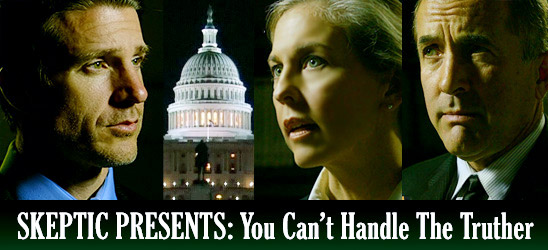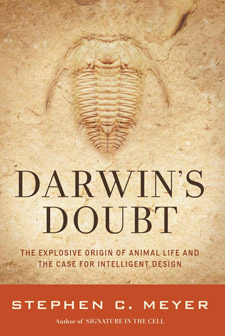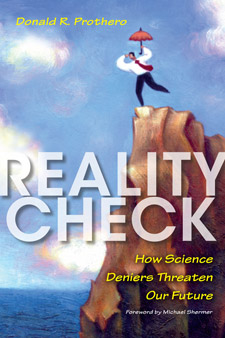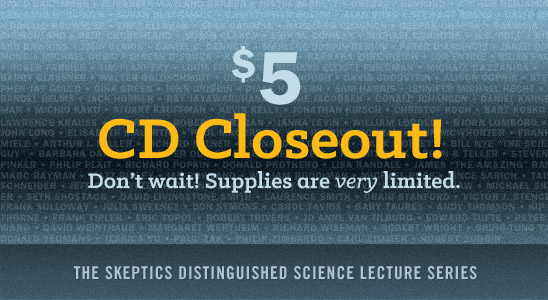ajborio
Shared posts
NYT now reports it's 'long been known that elder Biden' interacted with son's business partners
Fortress D.C.
I haven’t been to Capitol Hill for more than a year, but friends paint a sad picture of that area — swarms of National Guardsmen and few civilians. They find this disturbing.
According to the editors of National Review, there are around 6,000 troops in the area now (down from 25,000 on Inauguration Day). The plan, apparently, is to keep thousands there through March, and some National Guard presence through at least the Fall.
I agree with NR editors that this show of force makes no sense. In fact, even Eleanor Holmes Norton, D.C.’s left-liberal representative in Congress, has spoken out against the prospect of that continuing National Guard presence.
Turning the Capitol and its grounds into an armed fortress is a bad look in a democracy. We should want tourists to flock to the Capitol, as they have always done. A large presence of troops will keep them away.
It’s true, of course, that we need to protect the building and those who work there. But there’s no reason to believe that another attack like that of January 6 will occur now that the fantasy of blocking Biden’s election is an impossibility. And even that attack probably could have been handled without the National Guard if the Capitol police had been better prepared.
Thus, the NR editors rightly conclude:
The large-scale presence of National Guardsmen on the Hill should end. These troops have done their duty admirably, but it’s time to go home.
New security protocols may be necessary at the Capitol — certainly the police should be better prepared for protests that might run out of control — but they should be carefully thought through and calibrated. And they shouldn’t include a tall razor-wire fence that symbolically separates our elected representatives from the people they serve.
The U.S. Capitol is one of the marvels of our open society. It shouldn’t be made to look like it belongs in a closed one.
The disgusting hypocrisy of White Evangelicals in the United States
All religion is bullshit. However...
Just imagine the outrage if the muslim population in the US was freaking out this hard about their candidate losing.
Just imagine.
Remember those images and videos of Evangelicals literally on their knees praying for a Trump (stolen) victory? Picture of a bunch of Muslims on their knees praying, chanting allah akbar, hoping their prophet takes office. It'd still be on the front page of Fox News
[link] [comments]
Nikki Haley: John Kelly and Rex Tillerson Tried to Enlist Me to Undermine Trump, Claiming They Were "Trying to Save the Country"
7 Stats That Show What It Takes to Run a Modern SOC
Walgreens coupon - BOGO Free on 20 oz. Coke products
In a rare move, Walgreens is offering up a paperless coupon (must have a reward membership w/Walgreens) that will net a free 20 oz. Coke product with the purchase of the same. Take advantage soon, because there’s nothing better than an ice cold Coke on a hot summer day. Offer ends 07/13/2018.
Visit The Bargainist for more.
Pastor Blames “Atheist Fundamentalists” for Making Hospital Room Bibles Optional
Comment Of The Day: Tenacious D Edition

Porsche, the team with the most 24 Hours Of LeMans wins, called it quits after 2017, but to commemorate its past, the brand has embarked on a “919 Tribute” tour. Hmm, a tribute to the best team in the world. I wonder what Jack Black would say about this.
Latency: why typing on old computers just feels better

How long does it take, from keypress to the letter appearing on-screen, in a basic terminal window? My Core i7 PC with a GTX 1070 video card and 32gb of RAM might -- might -- be about as fast as 35-year-old Apple IIe. And almost nothing else is. It seems that modern computers are so complex that there are just some things they can't do quickly (Dan Luu).
Compared to a modern computer that’s not the latest ipad pro, the apple 2 has significant advantages on both the input and the output, and it also has an advantage between the input and the output for all but the most carefully written code since the apple 2 doesn’t have to deal with context switches, buffers involved in handoffs between different processes, etc. On the input, if we look at modern keyboards, it’s common to see them scan their inputs at 100 Hz to 200 Hz (e.g., the ergodox claims to scan at 167 Hz). By comparison, the apple 2e effectively scans at 556 Hz. ...If we look at the other end of the pipeline, the display, we can also find latency bloat there. I have a display that advertises 1 ms switching on the box, but if we look at how long it takes for the display to actually show a character from when you can first see the trace of it on the screen until the character is solid, it can easily be 10 ms. You can even see this effect with some high-refresh-rate displays that are sold on their allegedly good latency.
Only one modern machine, doing one task, can keep up with the Apple IIe's keyboard latency: a second-gen iPad Pro's pencil input. Nothing else (including the iPad Pro's own keyboard) hits 30ms.
I had my own agonizing tangle with this problem. My favorite writing app, WriteRoom, is so laggy on my 12" MacBook that I just don't bother: an earlier version still shoots fast as lightning on a 2000s-vintage Snow Leopard iMac. Somewhere between Snow Leopard and Yosemite, between Core Duo and Core m3, between WriteRoom 2 and the most post-Lion versions, so much more horsepower is required draw words on the screen that a contemporary Mac is visibly slower than a decade-old one.
6 dead after fire guts London high-rise where residents complained about safety for years

London's Grenfell Tower, built in the 1970s, is 27 stories tall and the subject of years of desperate complaints by its residents concerning safety. Last night it was completely consumed by fire, claiming the lives of at least six residents and sending hundreds more to hospital. Witnesses report that they heard no alarms and saw no sprinklers, despite a recent "renovation."
https://www.youtube.com/watch?v=lVI2D_FFMmsEyewitnesses described people trapped in the burning Grenfell Tower, in north Kensington, screaming for help and yelling for their children to be saved.
Firefighters rescued "large numbers", but London Mayor Sadiq Khan said "a lot" of people were unaccounted for.
The 24-storey block, which is still on fire, looks at risk of collapsing.
During the night, eyewitnesses said they saw lights - thought to be mobile phones or torches - flashing at the top of the block of flats, and trapped residents coming to their windows - some holding children.
The Grenfell residents association's blog amounts to years of postings, desperately pleading with local government and the Kensington and Chelsea Tenant Management Organisation for their lives, in full knowledge that they would soon lose them. It's disgusting and terrifying.
A baby was caught by a member of the public after being dropped from Grenfell Tower as it was engulfed with flames, a witness said.
Samira Lamrani said she saw a woman try to save a baby by dropping it from a window "on the ninth or 10th floor" to waiting members of the public below.
"People were starting to appear at the windows, frantically banging and screaming," she said. "The windows were slightly ajar, a woman was gesturing that she was about to throw her baby and if somebody could catch her baby.
"Somebody did, a gentleman ran forward and managed to grab the baby."
Photo: Reuters / Toby Melville
Friendly Atheist by @hemantsblog: Viral Post Shows White Jesus Crashing Mormon Couple’s Engagement Photos
Rainbow Chip Cake, Carrot Cake, Pancake Mixes Recalled Due To Possible E. Coli-Laden Flour
The massive flour recall due to E. coli contamination at a General Mills flour plant has expanded, and has now reached the shelves of cake and pancake mixes. Potentially contaminated products include Krusteaz pancake mix, and Betty Crocker rainbow chip and carrot cake mixes. Yes, those Betty Crocker rainbow chips.
Both the rainbow chip and carrot cake mixes contain “flavor chips,” which is a rather unappetizing but accurate way to describe the blobs that simulate fresh shredded carrot or form the pretty rainbow-colored chips in the cake mix.
The company explains that “a General Mills supplier used Wondra flour implicated in the July 1, 2016 recall to manufacture the flavor chips used in this recalled cake mix flavor.” Wondra is a flour meant to blend more smoothly than standard flour, for making things like gravies and, apparently, flavor chips.
General Mills originally recalled the flour at the end of May, even before definitively linking it to the cases of E. coli illness across the country. but followed the product down the food supply chain to the company’s own cake mixes.
A separate company, Continental Mills, has recalledd its blueberry pancake mix because it may have some of the contaminated General Mills flour. The items to look for are Krusteaz Blueberry Pancake Mix in a 28-ounce box, and in a 3.5-pound bag. The box will have a “best by” date between 3/30/2018 and 6/16/2018, and the “family size” bag will have a date between 4/27/2018 and 4/28/2018.
Flour and Betty Crocker Cake Mix Recall [General Mills]
Fuck Your Prayers for Orlando
 |
submitted by /u/YourFairyGodmother [link] [comments] |
Netflix Admits To Throttling Its Own Streams On AT&T, Verizon Wireless Because Data Caps
If you have a network connection of a certain speed available on your phone, you expect receive data at roughly that speed, more or less. That’s how it works. Except that’s not how it’s been working for Netflix: the popular streaming video service was moving at a fraction of what users expected, on Verizon and AT&T networks. Consumers were all ready to line up and blame their mobile carriers, but the wireless companies weren’t the ones screwing around with anything, as it turns out. Netflix was.
The Wall Street Journal confirmed late last night that for the the last five years, Netflix has been capping their own mobile data streams at 600 Kbps on most wireless networks around the world.
The reasoning? If you hit your data cap and get socked with overage fees you won’t be watching any more Netflix this month — and you might cut back in future months, too. Therefore, in the interest of keeping customers watching and subscribing, they throttled the streams.
In terms of data usage, it’s easy to see why they chose that tactic. When we did the math on HD video a while back, Netflix was recommending a connection of 5MBps or faster in order to view HD video content… and their HD video streams used about 3 GB of bandwidth per hour. We calculated that viewing a lot of video (like, say, the entire 62-episode run of Breaking Bad) would put you so far over your average mobile data cap as to be completely ludicrous. In fact with those numbers, you’d go over a 3 GB data plan — Verizon’s “medium” — in a single episode.
Except millions of people with 3GB or 10GB data plans manage to watch Netflix for a few hours a month without going hundreds of dollars over their limits. So what gives?
Netflix gives.
Although your average modern mobile 4G LTE network can easily download data at speeds between 10 and 50 Mbps, the throttled Netflix streams are capped at less than 5 Mbps, allowing you to stroll, rather than sprint, towards your monthly data cap. You’ll still get there if you’re not using WiFi when you can, but it’ll take longer.
But wait: Netflix admitted to doing it for Verizon and AT&T customers, but not for T-Mobile or Sprint. Why not? Because “historically those two companies have had more consumer-friendly policies,” Netflix told the WSJ. Specifically, they mean the practice of throttling down data instead of charging overage fees. Watching too much Netflix in one week might mean you can’t for the next three weeks, but it won’t make you broke. And consumers are very sensitive to hits in the wallet region.
(T-Mobile customers, however, may still see reduced-quality Netflix streams thanks to the carrier’s BingeOn program.)
An AT&T representative told the WSJ, “We’re outraged to learn that Netflix is apparently throttling video for their AT&T customers without their knowledge or consent.” And while Netflix customers now have knowledge, there’s a decent case to be made that they didn’t exactly consent.
However, now that they’ve been called out on their behavior, Netflix says they’re working on ways to give consumers some say. They are “exploring new ways to give members more control in choosing video quality,” they told the WSJ, as well as soon launching a “mobile data saver” that will allow subscribers to tinker around with their mobile streaming settings.
Netflix Throttles Its Videos on AT&T, Verizon Networks [Wall Street Journal]
You Probably Won't Live Long Enough to Solve the World's Largest 22x22 Rubik's Cube

The last time the folks at Coren Puzzle tried to solve their ludicrous 22x22 custom Rubik’s Cube, the whole thing exploded in their hands. But that was just a minor setback it seems, because they finally having a version that works perfectly—if you have the patience.
Armed robbers fought off in attempted jewelry store heist, The Winston-Salem Journal, Winston-Salem, N.C. 11/3/15
Kids' 'Call of Duty Bomb' Gets Their Neighbors Evacuated at 3 a.m.

Some kids in Pennsylvania made a prop bomb they were using when they played a real-life game of Call of Duty out in the yard. This is why you don't leave your toys laying around outside, boys. A neighbor found it, didn't know what the hell it was, and a very real bomb squad evacuated several people.
Ask Dr. Nerdlove: My Date Doesn't Approve Of My Geeky Hobbies

What's going on, everyone? Welcome to the latest installment of Ask Dr. NerdLove, dedicated to solving your dating problems and making nerds just a little sexier every day. I've got a trio of questions for you this time, centered around some of the most common issues geeks face out in the dating pool.
The Supertyphoon and the Warming Globe
[UPDATE (Nov. 12, 2013 at 20:30 UTC): The conclusion I draw below — that the signature of global warming is too weak to see in current cyclone development — is not correct. It turns out a 2008 paper shows that the strongest cyclones have an increased maximum wind speed over the past few decades due to warming waters. The issue is important enough and detailed enough that I decided it warrants its own article, so I wrote an update to all this. You can read what's here first, but then please go read the followup. We're seeing the affects of global warming now.]
Yesterday, the supertyphoon Haiyan made landfall in Vietnam and China. Reports are still coming in, but many are confirmed dead and there are certainly many more injured. There’s considerable damage to property, infrastructure, and so on. Luckily — if that word is even appropriate here — the storm had weakened considerably before hitting those countries.
It was at its full and fearsome strength when it came across the Philippines last week, and the devastation there is almost beyond imaging. There are certainly thousands dead, with some estimates as high as 10,000. Over a half million people have been displaced, and millions more affected in one way or another. Humanitarian aid is pouring in, a bright spot in this dark moment.
In situations like this, it’s common to ask why these things can happen, how these things can happen, and even to call them “an act of God.”
Feeding the Monster
However, we know what causes large-scale cyclones like hurricanes and typhoons: Heat. Specifically, warm water, which provides energy to the storm. The water warms the air above it, which responds by rising. Surrounding cooler air is drawn in, is warmed by the water, rises, and the cycle continues. As it grows, the rotation of the Earth sets the huge air mass spinning, and you get a hurricane (or, as they are called when they’re in the Pacific Ocean, a typhoon — the generic term is a tropical cyclone). It continues to strengthen as long as more energy is available.
Perhaps you see where this is going. The more warm water there is, the more energy the tropical cyclone can get. This is why we see them in the summer, not winter; the water must be warm. And if the water is warmer than usual, or there’s more of it, the system can grow until it becomes a monster.
But we know — we know — the oceans are warming. A huge amount of energy is being stuffed into them, because we know — we know — that excess carbon dioxide in the air is preventing the Earth from being able to radiate away some of the energy that comes down in the form of sunlight. The process is as simple as it is terrible and damning: More CO2 means more energy which means more heat stored in the oceans.
And that means either more strong hurricanes and typhoons, or stronger ones overall.
Laying Blame
I’ll note, with some care, that we cannot say that any specific storm is due to global warming. As climatologist Michael Mann says, it’s like throwing loaded dice; you might have gotten two sixes naturally in any given throw, but over time they’ll turn up more than they should randomly.
The ocean waters in the Pacific have been warming in recent years. Haiyan fed off that, and there have been a greater number of intense storms recently as well. Haiyan had sustained winds of 195 miles per hour and gusts up to 235 mph just before it made landfall; speeds usually thought of for tornadoes, not hurricanes. It is one of if not the strongest storms ever to make landfall in recorded history.
Can we say that global warming directly made Haiyan the monster it was? No, of course not: There are many, many factors that can affect the size and strength of a storm. The exact path, the upper level winds, the moisture content of the air: These all contribute to the strength of a cyclone.
Can we say then that global warming contributed to the typhoon’s strength? Even that can be a little murky. It’s very difficult to disentangle the various factors that cause a cyclone to form and grow. It’s worth noting, for example, that the Pacific’s vast reservoir of extra warm water fueled the typhoon across its path. However, the current Atlantic hurricane season has been fairly weak, not due to lack of warm water, but instead most likely from plumes of dry air and more than usual amounts of wind shear, which tend to choke off hurricanes before they can form. This is why the recent IPCC report has “low confidence” that global warming contributes significantly to current cyclone activity*. It’s not that global warming doesn’t contribute, it’s just that we don’t know.
But all this is talking about the current conditions, the cyclones occurring now. What about the future?
The Warming Future
While it may be difficult to see the effects of global warming on cyclones today, that almost certainly won’t always be the case.
We know that climate change is real, and that the planet is warming. We also know the oceans are warming, and that they feed cyclones. Things may fluctuate over a single cyclone season, or even over a timescale of years. But over decades, these conditions will make themselves known.
As time goes on, and the overall heat of our planet increases, the likelihood of more and more powerful storms increases as well. At the very least, as oceans warm up, there’s a lot more fuel for them.
At Climate Central there’s an interesting article about where this all may lead; some researchers are saying there will be fewer but more powerful cyclones, others say they will be both more powerful and more frequent.
That’s my concern. We may not start seeing Haiyan being the new normal for some time, but by the time that happens, it’ll probably be too late. You can’t start worrying about paying for your retirement when you’re 64; if you do, you’re screwed. You need to worry about it decades in advance.
Global warming is like an evil 401k. Ignore it, and you’ll be sorry eventually.
I think we’re getting plenty of warning of what the future will be like. Global warming is very real, and very real right now. We have the science to back up the claims. We know temperatures are on the rise. We know sea levels are going up, polar ice is melting, glaciers are retreating, and of a whole passel of other problems. And we know these effects are due to human influence.
Supertyphoon Haiyan may or may not be one of them. But it’s certainly a harbinger of things to come. At what point will we stop calling them an act of God, and instead an act of man?
The animation above of observations from the Elektro-L satellite courtesy of Roscosmos / NTSOMZ / SRC "Planeta" / zelenyikot.livejournal.com. Thanks to Vitaliy Egorov for sending it to me.
* Note that “low confidence” is not the same as “unlikely”; it just means they can’t be confident one way or another. This is yet another reason I’m not overly thrilled with the IPCC reporting style; it’s easy to obfuscate their actual meaning.
McDonald’s Testing Giant Family-Size Happy Meal In Kansas City

(Burger Business)
This is, according to industry site Burger Business, the first time that the company has marketed a family meal box in the United States, but not the first time that they’ve tried it in general. They’ve tried family-size meal boxes in the Czech Republic and Australia, a two-person “Mates Box” in Australia, and a family-size breakfast box in Malaysia.
The company says that the box is a local promotion that has to do with McDonalds’ sponsorship of the Kansas City Chiefs. They’re not admitting whether it’s a test of a potential permanent menu item, but that would definitely make sense. A box meal offers the same benefits as a combo…just more of it. It gives customers a discount off the sticker price of the items, that’s true, but also locks customers in to the purchase of high-profit but optional items like fries and soft drinks.
McDonald’s Blitz Box Tests Multi-Meals [Burger Business]
13-08-07
In this week’s eSkeptic:
SKEPTIC PRESENTS
You Can’t Handle the Truther
We are pleased to present the third in our series of videos that promote science and critical thinking through the use of humor, wit, and satire. In this video, You Can’t Handle the Truther, CIA Agents plot the 9/11 attack on the Twin Towers and Pentagon. If you missed our first two videos, check them out: The Con Academy and B.Y.T.H Busters: The Secret Law of Attraction.
Help Us Make More Videos
If you would like to show your support, please make a tax-deductible donation to the Skeptics Society by clicking the button below. With your support, we hope to produce these instructional, educational, and entertaining videos regularly throughout the year for free viewing and use by everyone everywhere to spread the message of the power of science and skepticism to make the world a saner, safer place.
Make a tax-deductible donation
to the Skeptics Society
CREDITS: Special thanks to David Cowan, Daniel Mendez, and Jim Robinson for their support in launching this series of Skeptic videos.
Written and Produced by: Brian Keith Dalton, Michael Shermer, Pat Linse. Directed, lensed, and edited by: Brian Keith Dalton. Executive Producers: David Cowan, Daniel Mendez, Jim Robinson. Starring: Sean Douglas, Amy Rohren, Michael Shermer, Brian Keith Dalton. Production Assistants: Matthew David, Gediminas Schuppenhauer, Pat Linse. Music by: Videoblocks.com and Brian Keith Dalton. Additional Video from: Videoblocks.com. Shot on: a Canon C100

The Key to the Legend
of the Map Monsters
Join us for a fascinating look at the mysterious sea monsters that decorated medieval maps. We talk with Chet Van Duzer about his recent book Sea Monsters on Medieval and Renaissance Maps, which brings to light the remarkable sources behind the strange looking creatures which populate the seas of these beautiful old documents.
Chet Van Duzer is a writer and researcher and is currently an Invited Research Scholar at the John Carter Brown Library in Rhode Island. He has published extensively on medieval maps.
Listen to MonsterTalk on your iOS and Android Devices!
Get the MonsterTalk Podcast App (presented by Skeptic Magazine) and enjoy the science show about monsters on your handheld devices! Available for Android, iPhone, iPad, and iPod Touch. To listen to Monstertalk on your iPhone, iPad or iPod, download the free Podcast Box App on iTunes and search for MonsterTalk in the app.
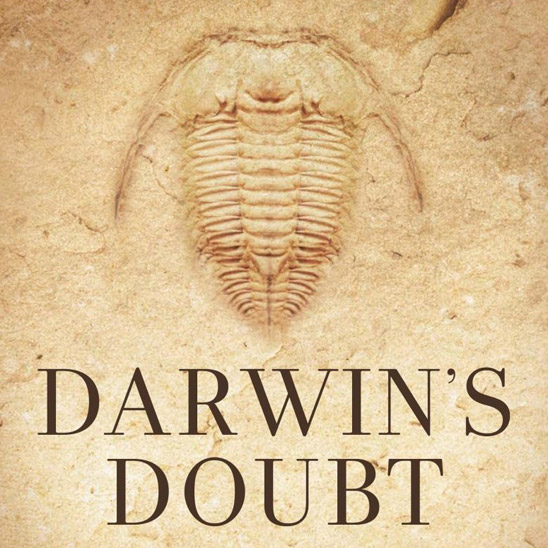
About this week’s eSkeptic
In this week’s eSkeptic, Donald R. Prothero reviews Darwin’s Doubt: The Explosive Origin of Animal Life and the Case for Intelligent Design by Stephen Meyer (HarperCollins, 2013). Read Prothero’s full bio after the article.
Share this article with friends online.
Click the + for more options.
Subscribe to Skeptic magazine for more great articles like this one, and if you enjoy reading them, consider making a tax-deductible donation to the Skeptics Society.
Stephen Meyer’s Fumbling Bumbling Amateur Cambrian Follies
a book review by Donald R. Prothero
“In everything the prudent acts with knowledge,
but a fool flaunts his folly.”—Proverbs 13:16
“Ignorance more frequently begets confidence than does knowledge.”
—Charles Darwin, The Descent of Man
“The fool doth think he is wise, but the wise man knows himself
to be a fool.”—William Shakespeare, As You Like It
The Dunning-Kruger effect is a well-known phenomenon in psychology first named in 1998, but it has been recognized since before the Bible and Shakespeare. In a nutshell, it is (as Bertrand Russell put it) ”The trouble with the world is that the stupid are cocksure and the intelligent are full of doubt.” There is also another well-known psychological phenomenon: motivated reasoning. Our brains have many blind spots in them that allow us to reconcile the real world with the world as we want it to be, and reduce the clash of cognitive dissonance. The most familiar of these is confirmation bias, where we see only what we want to see, and ignore or forget anything that doesn’t fit our preferred world-view. When this bias emerges in argument, it takes the form of cherry-picking: finding a few facts out of context that seem to support what we want to believe, and ignoring everything else that contradicts what we are trying to promote.
The entire literature of creationism (and of its recent offspring, “intelligent design” creationism) works entirely on that principle: they don’t like any science that disagrees with their view of religion, so they pick tiny bits out of context that seem to support what they want to believe, and cherry-pick individual cases which fits their bias. In their writings, they are legendary for “quote-mining”: taking a quote out of context to mean the exact opposite of what the author clearly intended (sometimes unintentionally, but often deliberately and maliciously). They either cannot understand the scientific meaning of many fields from genetics to paleontology to geochronology, or their bias filters out all but tiny bits of a research subject that seems to comfort them, and they ignore all the rest.
Another common tactic of creationists is credential mongering. They love to flaunt their Ph.D.’s on their book covers, giving the uninitiated the impression that they are all-purpose experts in every topic. As anyone who has earned a Ph.D. knows, the opposite is true: the doctoral degree forces you to focus on one narrow research problem for a long time, so you tend to lose your breadth of training in other sciences. Nevertheless, they flaunt their doctorates in hydrology or biochemistry, then talk about paleontology or geochronology, subjects they have zero qualification to discuss. Their Ph.D. is only relevant in the field where they have specialized training. It’s comparable to asking a Ph.D. to fix your car or write a symphony—they may be smart, but they don’t have the appropriate specialized training to do a competent job based on their Ph.D. alone.
Stephen Meyer’s first demonstration of these biases was his atrociously incompetent book Signature in the Cell (2009, HarperOne), which was universally lambasted by molecular biologists as an amateurish effort by someone with no firsthand training or research experience in molecular biology. (Meyer’s Ph.D. is in history of science, and his undergrad degree is in geophysics, which give him absolutely no background to talk about molecular evolution). Undaunted by this debacle, Meyer now blunders into another field in which he has no research experience or advanced training: my own profession, paleontology. I can now report that he’s just as incompetent in my field as he was in molecular biology. Almost every page of this book is riddled by errors of fact or interpretation that could only result from someone writing in a subject way over his head, abetted by the creationist tendency to pluck facts out of context and get their meaning completely backwards. But as one of the few people in the entire creationist movement who has actually taken a few geology classes (but apparently no paleontology classes), he is their “expert” in this area, and is happy to mislead the creationist audience that knows no science at all with his slick but completely false understanding of the subject.
Let’s take the central subject of the book: the “Cambrian explosion”, or the apparently rapid diversification of life during the Cambrian Period, starting about 545 million years (m.y.) ago. When Darwin wrote about it in 1859, it was indeed a puzzle, since so little was known about the fossil record then. But as paleontologists have worked hard on the topic and learned a lot since about 1945 (as I discuss in detail in my 2007 book, Evolution: What the Fossils Say and Why it Matters). As a result, we now know that the “explosion” took place over an 80 m.y. time frame. Paleontologists are gradually abandoning the misleading and outdated term “Cambrian explosion” for a more accurate one, “Cambrian slow fuse” or “Cambrian diversification.” The entire diversification of life is now known to have gone through a number of distinct steps, from the first fossils of simple bacterial life 3.5 billion years old, to the first multicellular animals 700 m.y. ago (the Ediacara fauna), to the first evidence of skeletonized fossils (tiny fragments of small shells, nicknamed the “little shellies”) at the beginning of the Cambrian, 545 m.y. ago (the Nemakit-Daldynian and Tommotian stages of the Cambrian), to the third stage of the Cambrian (Atdabanian, 530 m.y. ago), when you find the first fossils of the larger animals with hard shells, such as trilobites.
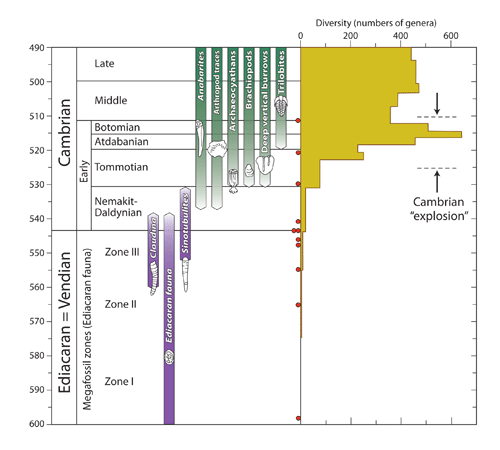
Figure 1: (Click image to download a printable PDF.)
Timescale of the Cambrian diversification event, showing the gradual and stepwise increase in diversity through the first three stages of the Early Cambrian. Meyer’s book completely ignores the existence of the first two stages (Nemakit-Daldynian and Tommotian Stages), and falsely asserts that all Cambrian forms abruptly arose in the third stage of the Cambrian (Atdabanian) stage, some 15 million years after the true beginning of the Cambrian.
Does Meyer reflect this modern understanding of the subject? No! His figures (e.g., Figs. 2.5, 2.6, 3.8) portray the “explosion” as if it happened all at once, showing that he has paid no attention to the past 70 years of discoveries. He dismisses the Ediacara fauna as not clearly related to living phyla (a point that is still debated among paleontologists), but its very existence is fatal to the creationist falsehood that multicellular animals appeared all at once in the fossil record with no predecessors. Even more damning, Meyer completely ignores the existence of the first two stages of the Cambrian (nowhere are they even mentioned in the book) and talks about the Atdabanian stage as if it were the entire Cambrian all by itself. His misleading figures (e.g., Fig. 2.5, 2.6, 3.8) imply that there were no modern phyla in existence until the trilobites diversified in the Atdabanian. That’s a flat out lie. Even a casual glance at any modern diagram of life’s diversification (Figure 1) demonstrates that probable arthropods, cnidarians, and echinoderms are present in the Ediacara fauna, mollusks and sponges are well documented from the Nemakit-Daldynian Stage, and brachiopods and archaeocyathids appear in the Tommotian Stage—all millions of years before Meyer’s incorrectly defined “Cambrian explosion” in the Atdabanian. The phyla that he lists in Fig. 2.6 as “explosively” appearing in the Atdabanian stages all actually appeared much earlier—or they are soft-bodied phyla from the Chinese Chengjiang fauna, whose first appearance artificially inflates the count. Meyer deliberately and dishonestly distorts the story by implying that these soft-bodied animals appeared all at once, when he knows that this is an artifact of preservation. It’s just an accident that there are no extraordinary soft-bodied faunas preserved before Chengjiang, so we simply have no fossils demonstrating their true first appearance, which occurred much earlier based on molecular evidence.
Meyer’s distorted and false view of conflating the entire Early Cambrian (545–520 m.y. ago) as consisting of only the third stage of the Early Cambrian (Atdabanian, 530–525 m.y. ago) creates a fundamental lie that falsifies everything else he says in the ensuing chapters. He even attacks me (p. 73) by claiming that during our 2009 debate, it was I who was improperly redefining the Cambrian! Even a cursory glance at any recent paleontology book on the topic, or even the Wikipedia site for “Cambrian explosion”, shows that it is Meyer who has cherry-picked and distorted the record, completely ignoring the 15 million years of the first two stages of the Cambrian because their existence shoots down his entire false interpretation of the fossil record. Sorry, Steve, but you don’t get to contradict every paleontologist in the world, ignore the evidence from the first two stages of the Cambrian, and redefine the Early Cambrian as the Atdabanian Stage just to fit your fairy tale!
Even if we grant the premise that a lot of phyla appear in the Atdabanian (solely because there are no soft-bodied faunas older than Chengjiang in the earliest Cambrian), Meyer claims the 5–6 million years of the Atdabanian are too fast for evolution to produce all the phyla of animals. Wrong again! Lieberman (2003) showed that rates of evolution during the “Cambrian explosion” are typical of any adaptive radiation in life’s history, whether you look at the Paleocene diversification of the mammals after the non-avian dinosaurs vanished, or even the diversification of humans from their common ancestor with apes 6 m.y. ago. As distinguished Harvard paleontologist Andrew Knoll put it in his 2003 book, Life on a Young Planet:
Was there really a Cambrian Explosion? Some have treated the issue as semantic—anything that plays out over tens of millions of years cannot be “explosive,” and if the Cambrian animals didn’t “explode,” perhaps they did nothing at all out of the ordinary. Cambrian evolution was certainly not cartoonishly fast … Do we need to posit some unique but poorly understood evolutionary process to explain the emergence of modern animals? I don’t think so. The Cambrian Period contains plenty of time to accomplish what the Proterozoic didn’t without invoking processes unknown to population geneticists—20 million years is a long time for organisms that produce a new generation every year or two. (Knoll, 2003, p. 193)
The mistakes and deliberate misunderstandings and misinterpretations go on and on, page after page. Meyer takes the normal scientific debates about the early conflicts about the molecular vs. morphological trees of life as evidence scientists know nothing, completely ignoring the recent consensus between these data sets. Like all creationists, he completely misinterprets the Eldredge and Gould punctuated equilibrium model and claims that they are arguing that evolution doesn’t occur—when both Gould and Eldredge have clearly explained many times (which he never cites) why their ideas are compatible with Neo-Darwinism and not any kind of support for any form of creationism. He repeats many of the other classic creationist myths, all long debunked, including the post hoc argument from probability (you can’t make the argument that something is unlikely after the fact). He wastes a full chapter on the empty concept of “information” as the ID creationists define it. He butchers the subject of systematic biology, using the normal debate between competing hypotheses to argue that scientists can’t make up their minds—when that is the ordinary way in which scientific questions are argued until consensus has been reached. He confuses crown-groups with stem-groups, botches the arguments about recognition of ancestors in the fossil record, and can’t tell a cladogram from a family tree. He blunders through the fields of epigenetics and evo-devo and genetic drift as if they completely falsified Neo-Darwinism, rather than as scientists view them—as supplements to our understanding of it. (Even if they did somehow shoot down some aspects of Neo-Darwinism, they are providing additional possible mechanisms for evolution, something he supposedly does not believe in!). In short, he runs the full gamut of topics in modern evolutionary biology, managing to distort or confuse every one of them, and only demonstrating that he is completely incapable of understanding these topics.
In several places in the book, he shows his pictures of the Cambrian sections in China, or talks in the final chapter about visiting the Burgess Shale in Canada (a Middle Cambrian locality, millions of years after the “Cambrian explosion” was long over), as if to establish his street-cred that he at least got away from his office and computer once in a while. Visiting these famous places like a tourist doesn’t qualify you to write a guidebook of the complexity of the fossils that were recovered there. If he had actually done the hard work of learning about paleontology and doing the research in the field himself (as real scientists have), we might take him seriously. As it is, this book only demonstrates that Meyer can completely misunderstand, misinterpret and misread subjects like paleontology just as badly as he botched his interpretation of molecular biology. (For a good account by real paleontologists who know what they’re doing, see the excellent recent book by Valentine and Erwin, 2013, which gives an accurate view of the “Cambrian diversification”).
Finally, one might wonder: what’s all the fuss about the “Cambrian explosion”? Why should it matter whether evolution was fast or slow during the third stage of the Cambrian? Some scientists might find this puzzling, but you must understand the minds of creationists. They operate by a “god of the gaps” argument: anything that is currently not easily explained by science is automatically attributed to supernatural causes. Even though ID creationists say that this supernatural designer could be any deity or even extraterrestrials, it is well documented that they are thinking of the Judeo-Christian god when they point to the complexity and “design” of life. They argue that if scientists haven’t completely explained every possible event of the Early Cambrian, science has failed and we must consider supernatural causes.
Of course, this is a lie. For one thing, Meyer’s description of the “Cambrian explosion” is distorted and false, since he deliberately ignores the events of the first two stages of the Cambrian. Secondly, this “god of the gaps” approach is guaranteed to fail, because scientists have explained most of the events of the Early Cambrian and find nothing out of the ordinary that defies scientific explanation. Only a few details remain to be worked out. As our fossil record of that time interval improves and we understand it even better, there will be nothing left for the creationists to point to that might require supernatural intervention. This is a losing strategy for them in every possible way.
In short, Meyer has shown that his first disastrous book was not a fluke: he is capable of going into any field in which he has no training or research experience and botching it just as badly as he did molecular biology. As I’ve written before, if you are a complete amateur and don’t understand a subject, don’t demonstrate the Dunning-Kruger effect by writing a book about it and proving your ignorance to everyone else! Some people with creationist leanings or little understanding of paleontology might find this long-winded, confusingly written book convincing, but anyone with a decent background in paleontology can easily see through his distortions and deliberate misunderstandings and misinterpretations. Even though Amazon.com persists in listing this book in their “Paleontology” subsection, I’ve seen a number of bookstores already which have it properly placed in their “Religion” section—or even more appropriately, in “Fiction.” ![]()
References
- Erwin, D., and J.W. Valentine. 2013. The Cambrian Explosion: The Construction of Biodiversity. Roberts and Company, Publishers, New York.
- Knoll, A.H. 2003. Life on a Young Planet: The First Three Billion Years of Life on Earth. Princeton University Press, Princeton, NJ.
- Lieberman, B.S. 2003. Taking the pulse of the Cambrian radiation. Integrative and Comparative Biology 43:229–237.
- Prothero, D.R. 2007. Evolution: What the Fossils Say and Why it Matters. Columbia University Press, New York.
About the Author

DR. DONALD R. PROTHERO was Professor of Geology at Occidental College in Los Angeles, and Lecturer in Geobiology at the California Institute of Technology in Pasadena. He earned M.A., M.Phil., and Ph.D. degrees in geological sciences from Columbia University in 1982, and a B.A. in geology and biology (highest honors, Phi Beta Kappa) from the University of California, Riverside. He is currently the author, co-author, editor, or co-editor of 32 books and over 250 scientific papers, including five leading geology textbooks and five trade books as well as edited symposium volumes and other technical works. He is on the editorial board of Skeptic magazine, and in the past has served as an associate or technical editor for Geology, Paleobiology and Journal of Paleontology. He is a Fellow of the Geological Society of America, the Paleontological Society, and the Linnaean Society of London, and has also received fellowships from the Guggenheim Foundation and the National Science Foundation. He has served as the President and Vice President of the Pacific Section of SEPM (Society of Sedimentary Geology), and five years as the Program Chair for the Society of Vertebrate Paleontology. In 1991, he received the Schuchert Award of the Paleontological Society for the outstanding paleontologist under the age of 40. He has also been featured on several television documentaries, including episodes of Paleoworld (BBC), Prehistoric Monsters Revealed (History Channel), Entelodon and Hyaenodon (National Geographic Channel) and Walking with Prehistoric Beasts (BBC). His website is: www.donaldprothero.com. Check out Donald Prothero’s page at Shop Skeptic.
Bono: Only Capitalism Can End Poverty
Marian L. Tupy
This is a great day. For years, Bono has been something of a pain, banging on about the need for billions of dollars in Western foreign aid to Africa. I have criticized him for ignoring the real source of African poverty – lack of capitalism – on numerous occasions.
But, unlike many who hate capitalism without reservation, Bono is open to changing his mind. Here is Bono giving capitalism its due recognition during a recent speech at Georgetown University. As the musician put it, when it comes to poverty “free enterprise is a cure.”
Indeed, the evidence is overwhelming.
According to the World Bank, global poverty is declining rapidly. In 1981, 70 percent of people in poor countries lived on less than $2 a day, while 42 percent survived on less than $1 a day. Today, 43 percent live on less than $2 a day, while 14 percent survive on less than $1. “Poverty reduction of this magnitude is unparalleled in history,” wrote Brookings Institution researchers Laurence Chandy and Geoffrey Gertz in a recent paper. “Never before have so many people been lifted out of poverty over such a brief period of time.”
As far as Africa goes, inflation adjusted per capita incomes rose by an astonishing 97 percent between 1999 and 2010. That is good news for Africa and for humanity. More people should recognize it.













